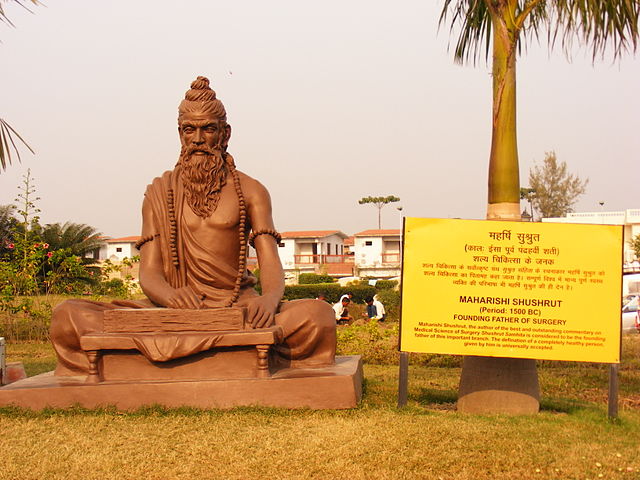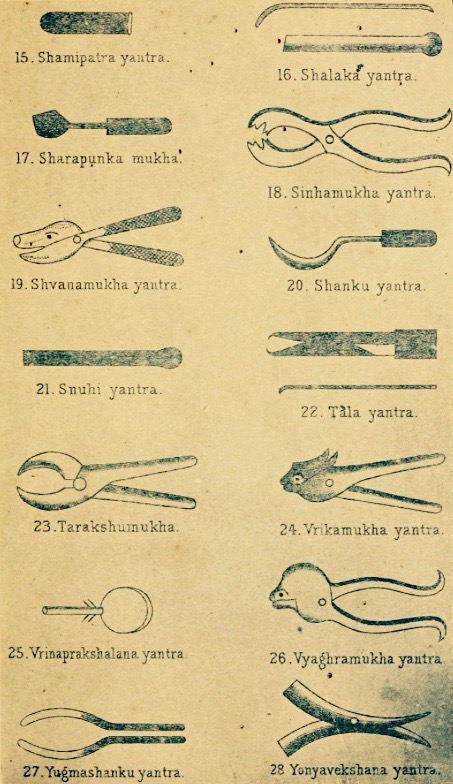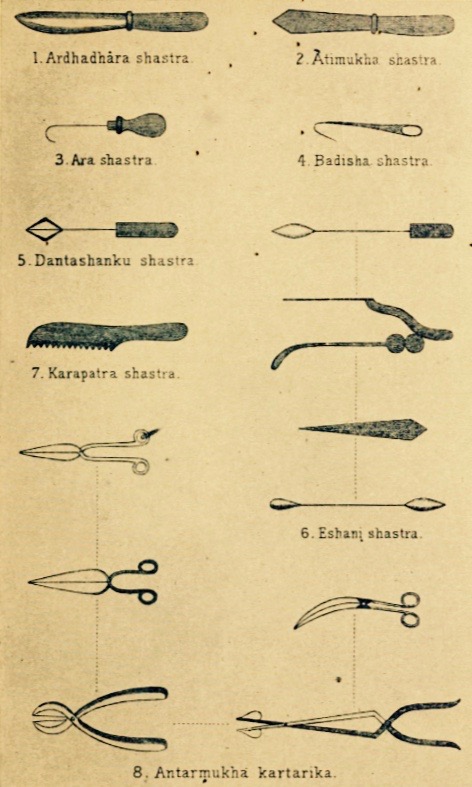
| SUSHRUT
Sushrut Born : Kingdom of Kashi (Present Day Uttar Pradesh, India)
Known for : Author of Sushruta Samhita Scientific career
Fields : Medicine, Plastic surgery, Dentistry, Obstetrics and gynaecology
Sushrut, or Sushrut was an ancient Indian physician known as the main author of the treatise The Compendium of Sushrut (Sanskrit: Sushrut-samhita). The Mahabharat, an ancient Indian epic text, represents him as a son of Vishvamitra, which coincides with the present recension of Sushrut Samhita. Kunjalal Bhisagratna opined that it is safe to assume that Sushrut was the name of the clan to which Vishvamitra belonged. He is one of a number of individuals described as the "Father of surgery" and "Father of Plastic Surgery".
The Sushrut Samhita is one of the most important surviving ancient treatises on medicine and is considered a foundational text of Ayurved. A 1134 years old palm leaf manuscript of Sushrut Samhita is preserved in Kaiser Library Nepal. It is written in Kutila script also recognized as Gupta script. It is considered as the oldest document in the field of Ayurved (traditional medicine system using herbs and plants) medicine found and preserved in Nepal. The treatise addresses all aspects of general medicine, but the translator G. D. Singhal dubbed Sushrut "the father of surgery" on account of the detailed accounts of surgery to be found in the work. The Compendium of Sushruta locates its author in Varanasi.
Date
:
Citations
:
Sushrut-samhita :
Ancient indian text Sushrut samhita yantra, shows surgical instruments 4 of 4
Ancient indian text Sushrut samhita shastra and kartarika, surgical instruments 1 of 4 The Sushrut-samhita, in its extant form, in 184 chapters contains descriptions of 1,120 illnesses, 700 medicinal plants, 64 preparations from mineral sources and 57 preparations based on animal sources. The text discusses surgical techniques of making incisions, probing, extraction of foreign bodies, alkali and thermal cauterization, tooth extraction, excisions, and trocars for draining abscess, draining hydrocele and ascitic fluid, removal of the prostate gland, urethral stricture dilatation, vesicolithotomy, hernia surgery, caesarian section, management of haemorrhoids, fistulae, laparotomy and management of intestinal obstruction, perforated intestines and accidental perforation of the abdomen with protrusion of omentum and the principles of fracture management, viz., traction, manipulation, apposition and stabilization including some measures of rehabilitation and fitting of prosthetic. It enumerates six types of dislocations, twelve varieties of fractures, and classification of the bones and their reaction to the injuries, and gives a classification of eye diseases including cataract surgery.
Source :
https://en.wikipedia.org/ |


